Join More Than 50,000+ Subscribers and get latest camera news and rumors
NEW CAMERA VIDEOS ON YOUTUBE
|
By admin, on February 2nd, 2025

According to the latest rumors, Canon will soon announce the Canon V1 PowerShot compact camera. The rumor is not new; we published updates on December 30, 2023. At that time, we saw multiple prototypes of the compact camera.
Latest rumors surfaced over the web suggest Canon is working on the V1 camera, which is expected to carry a large one-inch sensor OR a Micro Four Thirds format sensor. In the past, we have seen that Canon has implemented a 20Mp 1inch sensor in their G7X series cameras and a 24-megapixel DPAF sensor inside their G1 X Mark series camera, respectively.
The previous generation of Canon G7 accessories cameras used the one-inch sensor, mainly dependent on Sony Imaging Division for their sensor supply. So what I feel at this very moment is that either Canon will again seek help or shake hands with Sony Imaging Corporation for their 1-inch 20MP hybrid sensor supply for their upcoming compacts, or they can directly use the 24-megapixel DPAF sensor of their R50 and R10 in their premium V-series compact camera. As they did in the past with the G1X flagship series.
Canon V1 Specification [Rumored]
- 24MP CMOS Sensor (approx)
- 16-50mm (35mm Equivalent)
- 3″ Screen (Approx 1 million pixels)
- The screen has a 170° viewing angle
- 4K Video (Very slight crop, but likely for aspect ratio)
- 1.4X Crop Mode for Stills
- RAW, C-RAW, Dual Pixel RAW
- H.265 / HEVC
- C-Log3 / HDR PQ
- Launch: Late Q1/Early Q2 2025
Technically, it’s easy for them to announce a one-inch sensor-based compact or an APS-C sensor-based camera instead of using a brand-new M4/3 sensor from the NEW supply chain. What I think is that there is a very rare possibility or probability that the upcoming Canon V-series compact will use a Micro Four Thirds format sensor.
Right now we have two different variations of Sony’s 1-inch sensor being used in Sony ZV-series compact cameras, the first one of the CDAF sensor being used in the ZV-1F camera, and the other variation of Sony compact the ZV-1, which uses HYBRID CMOS AF sensor, comes at a higher price. So, it will be really interesting to see which 20MP variant is being used by the upcoming Canon camera.
At the same time, while I am writing this article, very few specifications are available about the upcoming camera. As soon as we get any, we will be posting them on our website. Stay tuned.
Canon V1 or V100 – New Camera Patent Spotted | Spotted Back on December 2023
Canon V100 Latest Rumors – A step above the Canon V10
Sony ZV1 vs Sony ZV-1F | Know a major difference if you wish to
also, see – Canon Upcoming Cameras 2025
Get LIVE RUMORS –> FACEBOOK | TWITTER | INSTAGRAM to get live news + Canon rumors 24X7
source CanonRumor.com
By admin, on January 31st, 2025
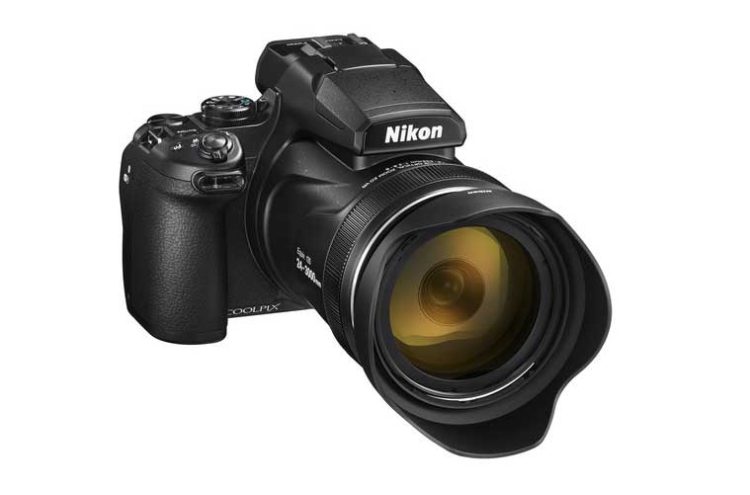
Recent reports suggest the demand for the Nikon P1000 camera has gained huge momentum. The camera is now selling for more than its recommended MSRP retail price range (approximately 2X price), and this is very clearly visible in online stores all around the world.
The demand for compact cameras has returned to the market, and most influencers right now are willing to buy a high-quality compact camera. However, the supply of compact cameras is very low, and at the same time, there is only one super high-zoom camera available: the Nikon P1000.
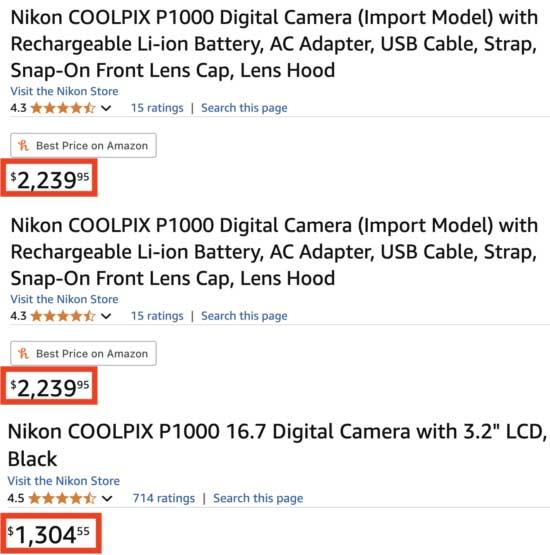
As we have already said, the recent report shows that the price of the P1000 is skyrocketing globally. Now let’s dive into the details and explore the possibilities, starting with the name of the camera.
Nikon P1100 or P2000: What’s Next from Nikon?
First of all, the scarcity of the Nikon P1000 camera and the high price tag clearly indicate a very high demand for a new model. Another big hint is that most of the P1000 stock has been sold out. It looks like the company is clearing up the previous stock in order to announce the new camera.
What will be the name of the upcoming Nikon mega-zoom camera? Based on leaks and speculations, the name is not very clear. If they move in chronological order, the name of the upcoming camera will likely be Nikon P1000, which would be the successor to the P1000. Earlier, the P1000 was the successor to the P900 camera, so this is how they are moving in chronological order in their mega-zoom series. However, if they take a bold leap with a major upgrade in the core specifications of the camera, or if some groundbreaking features like AI autofocus, a larger image sensor, and better optics are introduced, it may lead to a major leap in the name too, like Nikon P2000. Chinese sources are specifically speculating that the camera name will be the Nikon P2000 and not the P1100.
Rumored Specifications of the P1000 Successor:
- 150x high-quality optical zoom lens, with digital zoom up to 200x. – As per the initial rumors, the camera is set to have a 3500mm zoom lens. Earlier, the P1000 model had a 3000mm zoom lens, which was equivalent to 125x optical zoom.
- The new lens will have an aperture of f/2.8 ultra-wide aperture, which will improve the overall low-light performance of the camera and will also help ensure more artistic depth of field in the shots.
- The NEW 1/1.8-inch CMOS sensor (larger than the P1000’s 1/2.3-inch sensor) aims to boost dynamic range, reduce noise, and enhance image quality
- New AI Auotofous: Similar to what we have seen in Nikon Z50 II, Z6 III, Z8, and Z9.
- 4k 60FPS Video and continuous, refined autofocus and color grading tools for enhanced video production
Nikon P2000 camera can easily dominate the bridge camera market with its unmatched zoom and new AI modes. The best thing is that literally no competitor is present in the bridge camera market to compete against the Nikon P2000 camera.
The camera is targeted towards bird lovers, travel photographers, and even professionals who want to have a secondary body and an alternative to heavy and bulky DSLR setups. At the same time, a huge market demand has emerged from content creators who love to have tax-saver products and higher-zoom cameras that produce better image quality than their smartphones.
Nikon should announce the P1000 camera as soon as possible. The fan base is eagerly waiting for Nikon’s next move. Stay tuned—we will update you as soon as we get any new information related to the company’s upcoming cameras and lenses.
Follow us on our social pages FACEBOOK | TWITTER | INSTAGRAM to get live news + Nikon Rumors 24X7
source webio and NR.com
By admin, on January 30th, 2025

The first photo of DJI‘s new Action 6 sports camera has been leaked, and it is expected to be released sometime in 2025. The specific release date is expected to be between March and June of 2025.

The new camera’s battery capacity will be the same as the previous generation Action 5 Pro, at 1950mAh. No other specifications are currently available. Stay tuned.
DJI RS4 Mini camera gimbal Image Leaked
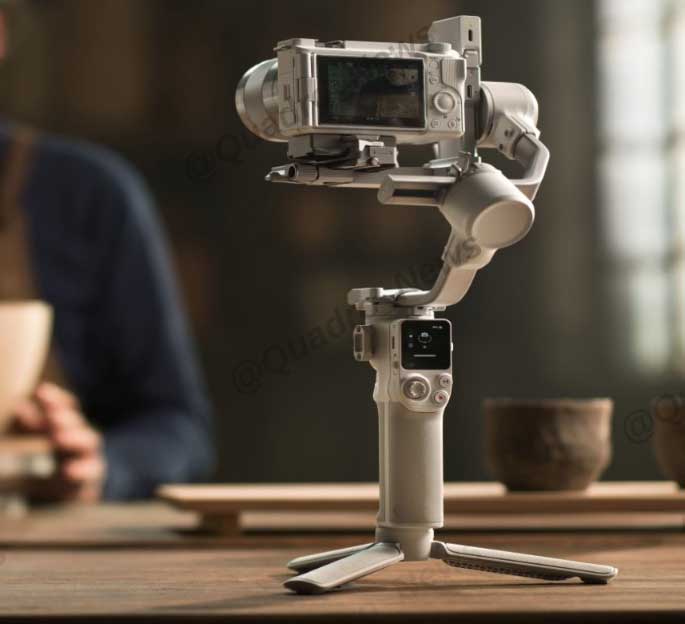
Now, as we can see in the leaked image, we have the DJI RS4 Mini camera gimbal that perfectly holds the Sony Z10 camera. Now, the major feature we will have in this particular version of the DJI RS4 Mini is the major improvement. DJI RS4 mini is rumored to launch later in 2025.
AI Tracker for Mini 4

The DJI Intelligent Tracking System is not a software feature; it’s a piece of hardware that gets attached to a camera. A mini-camera module is provided to track your movement and move the camera as you move. The RS4 Mini gimbal is helpful for new-age content creators who love to have an AI assistant along with them.
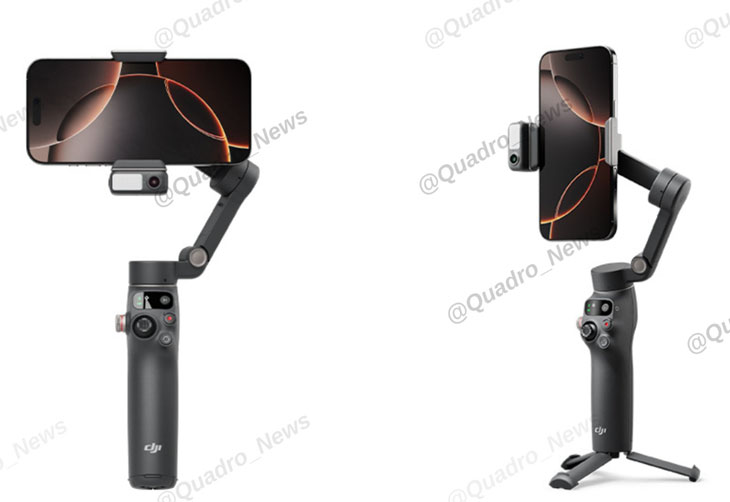
OSMO Mobile 7p with AI Tracker
The photos of the DJI Osmo Mobile 7P. Dark color, tracking and built in flash, the Mobile 7p is also expected to be announced on or before June 2025.
Stay tuned more updates coming
DJI Hasselblad to Expand Mirrorless System Cameras [Rumor]
Follow us on our social pages FACEBOOK | TWITTER | INSTAGRAM, If you have time –>see more Camera News and DJI Rumors
Source website Webio | Quadro_News
By admin, on January 29th, 2025
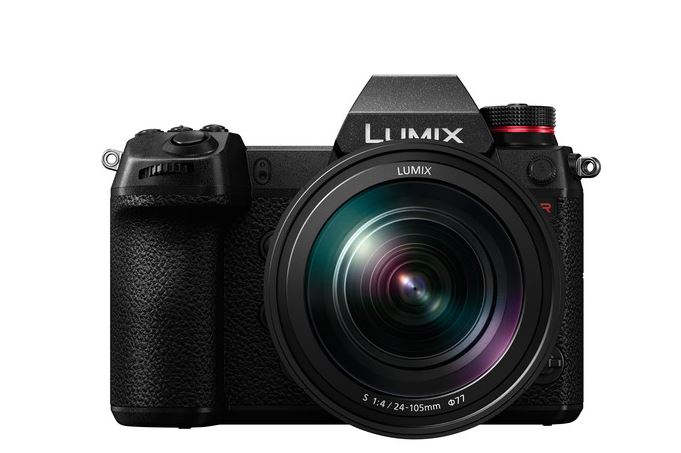
According to the latest rumors surfaced from reputed rumor mills, the Panasonic S1R Mark II camera announcement date is now confirmed, and it is said to arrive in February 2025. Take look at the set of updated specification of the upcoming camera
Panasonic S1R Mark II Core Specification [Updated specs]
-
- 44MP – Full frame CMOS Sensor
- No Optical low-pass (anti-aliasing) filter
- ISO 80 – 51200( expands to 40 – 102400)
- 5-axis Sensor-shift Image Stabilization
- 3.00″ Fully Articulated Screen
- 5760k dot Electronic viewfinder
- 9.0fps (40.0fps Electronic) continuous shooting
- 8K at 30fps , 4K at 60fps and FHD at 60fps Video Recording
- 10-bit 4:2:2 Color Sampling
- Built-in Wireless
- 800g. 134 x 102 x 92 mm
- Weather-sealed Body
Collaboration – Panasonic X Capture One – Panasonic has just collaborated to announce the S1R Mark 2 camera with Capture One. Capture One is industry-leading RAW editing software, so they have collaborated to bring out the maximum from the upcoming S1R Mark 2 camera.
One more Camera announcement is Due on April 2025
There is one more that Panasonic will be announcing a new camera in April 2025. The source of the rumor mill suggests is a very unique camera, although, after the Panasonic S1R Mark II update, we are waiting for the Panasonic S1H Mark II camera. Stay tuned, more updates coming.
We will publish more details very soon as we get any new updates.
Follow us on our social pages FACEBOOK | TWITTER | INSTAGRAM, to get LIVE News and Panasonic Rumor
source SAR YT
By admin, on January 28th, 2025
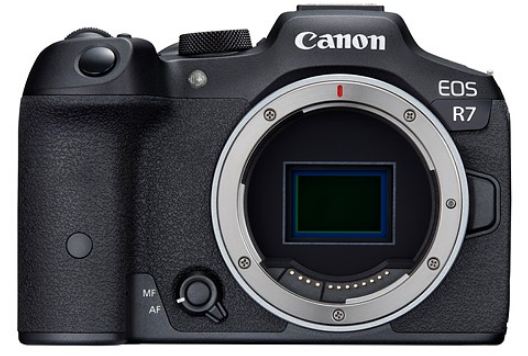
It is said that Canon will release a new APS-C camera in the first half of the year, and its specifications have been leaked, although the specs was leaked without mentioning the name of the model: The rumor was published on camerabeata webio
Canon Upcoming Camera Specification
- the new camera uses a 24.1-megapixel stacked CMOS sensor;
- with DIGIC X processor + DIGIC accelerator;
- supports 6K RAW and 120-fps 4K video shooting;
- a new body design;
- high-speed continuous shooting of 30 frames per second;
- supports C-Log2/C-Log3;
- equipped with a full-size HDMI interface;
- expected price of US$1,500;
TNC analysis
As per the rumor, specifications suggest it looks like an Upcoming APS-C flagship camera. We 100% confirm that Canon R7 Mark II coming this year,
Based on the rumored specs we can, we can clearly see a camera with a 24-megapixel stacked CMOS sensor with a DIGIC X processor and DIGIC accelerator. Not only that, the camera is also capable of recording 6K RAW and 120 fps 4K, A new body design has also been hinted at,
But again, the biggest loophole in the shared specification is the sensor resolution. The Canon R7 series already uses a 33.2 MP sensor, and even the competitors now like the Sony A6700, Fuji X-T5, and even some baseline models like the Sony ZV-E10 II and even fuji X-M5 use high-resolution sensors. So, Canon has no option other than to bring a 32.3 MP stacked CMOS sensor in the upcoming Canon R7 Mark II.
Will Canon go back in terms of resolution or sacrifice resolution in favor of speed? That’s the big question.
Now even if it’s a dedicated EOS C cinema camera (Canon R7C), Canon will never announce it in $1500 price range, Generally, cinema camera prices are comparatively higher, even the Sony FX30 which was announced back on 2023, comes at $1799 BODY ONLY price tag.
Let me know in the comment section what u guys think about this… I would love to see a Canon camera with this kind of specification in $1500 price range in 2025.
Also take a look at – Canon Upcoming Cameras 2025
Get LIVE RUMORS –> FACEBOOK | TWITTER | INSTAGRAM to get live news + Canon rumors 24X7
source camerabeata webio
By admin, on January 27th, 2025
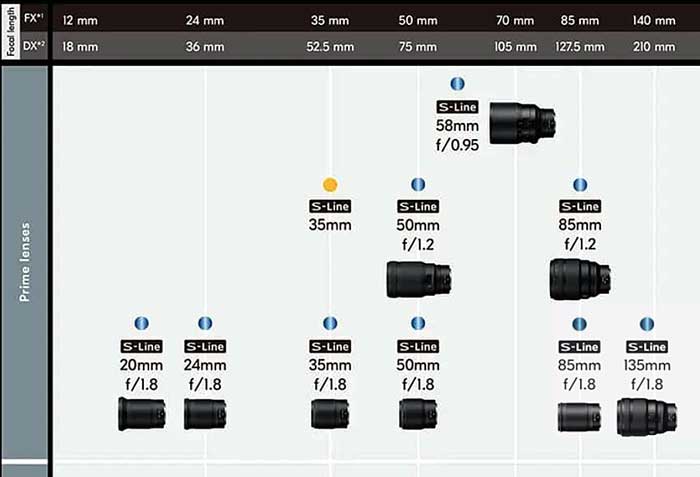
According to the latest rumors, the surface of the wave Nikon is about to announce the Z 35 mm f/1.2 lens before CP Plus, so in February. CP Plus will start on February 27 to March 2, 2025, at PACIFICO Yokohama in Yokohama, Japan, so the lens announcement is expected before that. Camera makers such as Canon, Nikon, Sony, Fujifilm, Sigma, and Panasonic, among others, will take part in that show.
We have already seen a 35 mm lens in a Nikon roadmap, and the 35 mm f/1.8 and the 35mm F1.4 [buy from Adorama] lens is already in the Nikon Z lineup. The 35 mm f/1.2 were the only missing link. So now, it is almost confirmed that the lens will be coming very soon.
On the other end, we have received information that the Nikon DX-format camera is expected to arrive at the end of 2025. We will bring more updates about that in our upcoming articles.
Nikon Upcoming Camera 2025
Follow us on our social pages FACEBOOK | TWITTER | INSTAGRAM to get live news + Nikon Rumors 24X7
source SAR YT
By admin, on January 27th, 2025
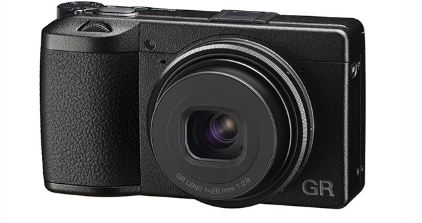
According to the latest rumors surfaced online, the Ricoh GR4 is likely to be announced sometime in late 2025. The information is coming out from webio [federation of independent photographers] As per the rumors, the camera will have massive improvements in the out-of-box system as well as in battery life.
Same kinds of rumors surfaced back in 2024. At that time, Ricoh sources confirmed that these rumors were false, and they were not planning to announce the GR4 camera in late 2024 or the first quarter of 2025.
When asked why there were rumors of the release of the Ricoh GR4? The source responded: The Ricoh GR series cameras are highly praised by users and the market feedback is hot. It is not surprising that there have been many rumors about the release of the GR4 last year and this year. It is too early to talk about the specific release date of the Ricoh GR4 camera. The existing GR3 and GR3x series models are still in short supply.
The Ricoh GR3 was announced back in 2019 and the GR2 was announced back in 2015, even if we talk about scheduled announcement timelines, the GR4 is overdue for an update. But at the very same time, Ricoh is not that serious about the camera. However, we do hope and expect that they will bring an update in the year.
Ricoh was once working on action cameras back in 2019 – check here
Get LIVE RUMORS –> FACEBOOK | TWITTER | INSTAGRAM to to get live news + Ricoh rumors 24X7
|
KEEP THIS BLOG ALIVE - Support New Camera Buy Canon Lenses, Buy Music CD or Digital Camera at amazon it helps this site, and you do not pay anything extra, it is just a way to help support this site.

|
















